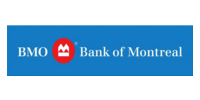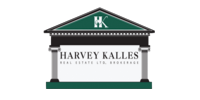Property investors who bought real estate in the last few years, and who planned to
“flip” that property, could face HST bills in the tens of thousands. Whether it's a new home or condominium, it's essential to check HST rules and guidelines, and understand all of the ins and outs. In the real estate world, there's a lot of paperwork and a lot of fine print – and failing to properly read fine print in a purchase agreement could present problems. This is particularly true with HST rebates.Property investors and average homebuyers are entitled to HST rebates when purchasing. And as most know, the federal portion of HST is 5%, while the provincial portion in Ontario is 8%. As for the rebate itself, there are a few basic guidelines:
- Properties costing $350,000 or less can qualify for a rebate of 36% of the federal HST portion
- For those properties costing between $350,000 and $450,000, there is a defined sliding scale
- For the provincial HST portion, buyers can apply for up to 75% of HST paid (up to $24,000)
HST rebates can sometimes add up to a sizeable amount of money, and without that rebate, the money is simply lost. However, in order to be eligible, the purchased property must be either a primaryresidence, or a property that will be rented out for at least one year. For those who have purchased a property as an investment, and who plan to rent out, the rebate application must include proof of a rental agreement. Selling the propertywithin a year will disqualify the rebate.
Sometimes, a disqualified rebate can cost an investor a substantial amount. For instance, some real estate investors bought their property (home or condo) from “plans”, several years prior to construction. They signed paperwork with the assurance of moving in, and the builder applied for the HST rebates. As construction progressed, and the property value increased, the investor made the decision to “flip” the property, and now CRA insists on having their HSTrebate back.
Investors or not, real estate buyers must understand their legal obligation when applying for an HST rebate. Option one is to move into the property as a primary residence when the deal closes. This allows for immediate application for a full HST rebate. Option two is to rent out the property for at least a year, after which time a rebate application can be made. For those intending to “flip” the property immediately, the best approach is to pay the full HST amount, and with no rebate.
Needless to say, the HST rebate process can be stressful, especially with some of the bureaucratic rules and regulations. This is where rebate professionals could be valuable. They understand the ins and outs; they deal with the CRA on a regular basis; and they don’t make mistakes. Rebate experts manage the HST process from initial application to refundcheque. And best of all, there’s no undue stress for the client – just a nice cheque.










